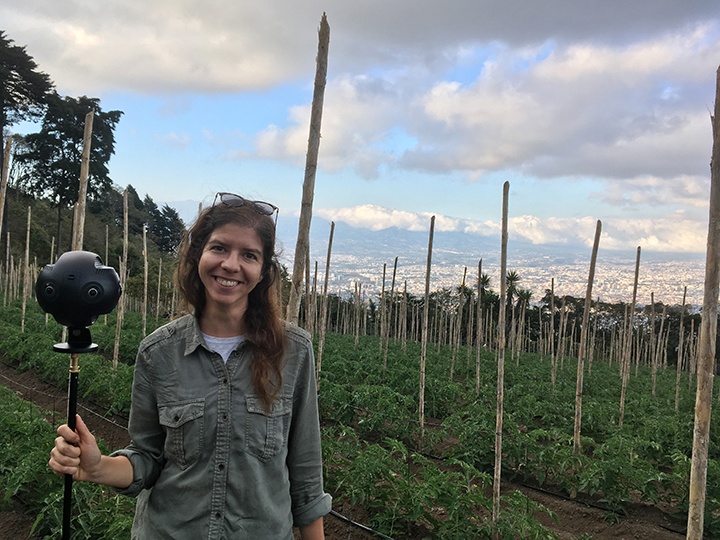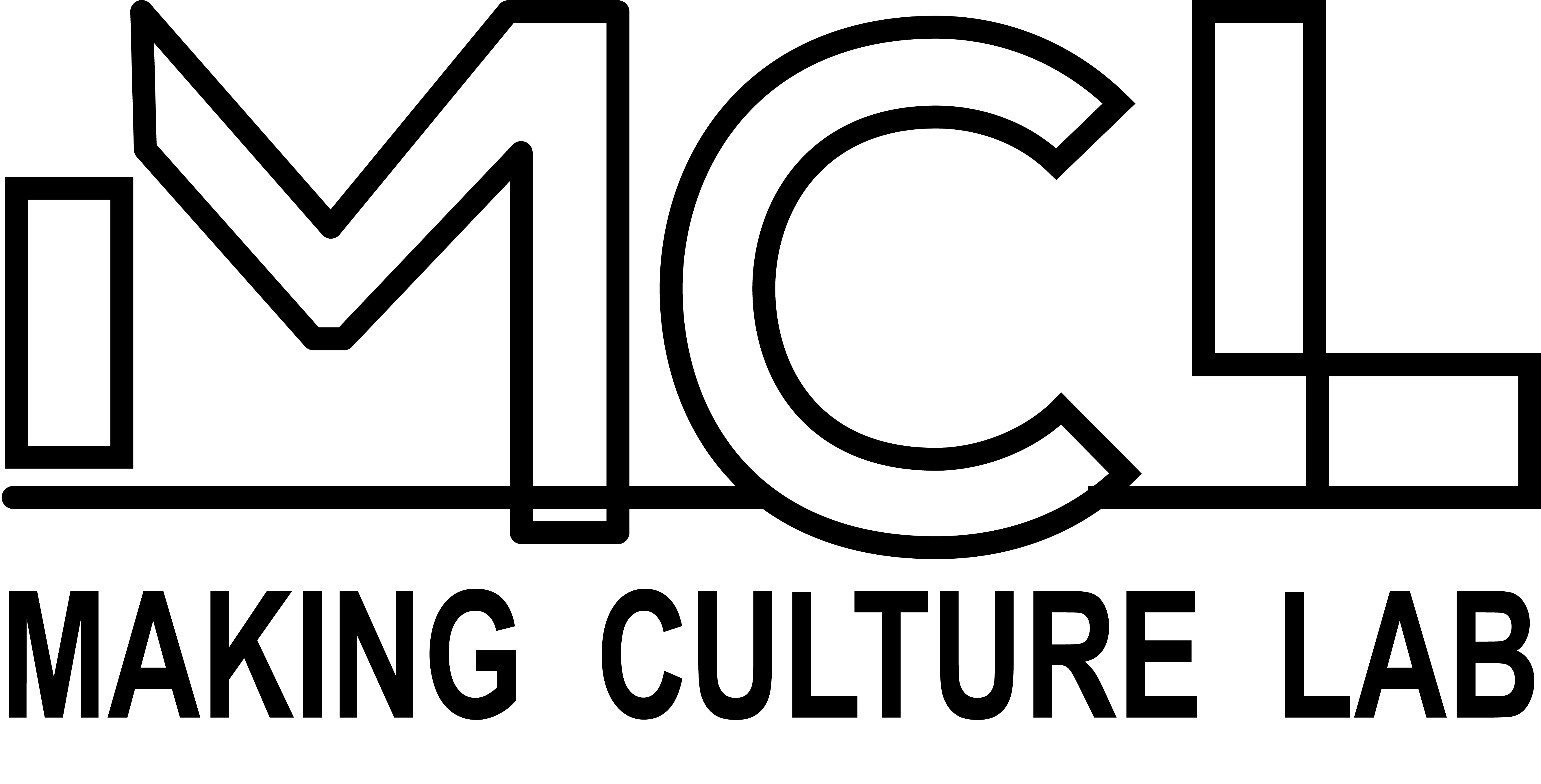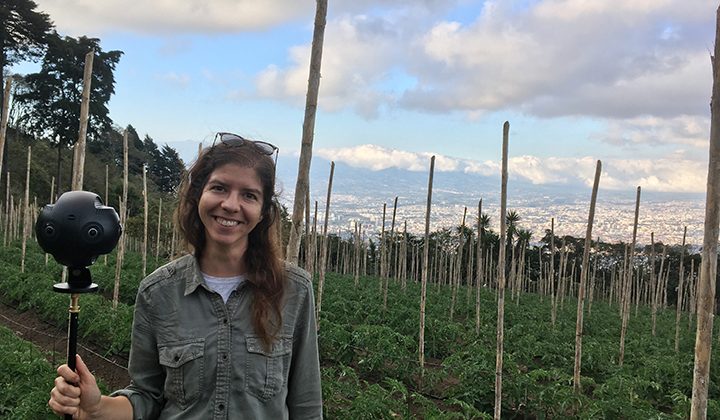Grad Student Spotlight: Reese Muntean
Read all about the wonderful work of PhD student Reese Muntean!

Copied from the SIAT website:
**************************************************
Reese Muntean shares stories on her SIAT graduate research that has taken her around the world.
What are you working on in your graduate studies?
My research, broadly, explores how we embed values into technology. I am interested in the intersections of technology and traditional knowledge, tangible and intangible cultural heritage, digital repatriation, ethics, sustainability, and materiality.
What are your favourite projects?
Recently I have been exploring whether virtual reality and immersive environments such as 360° video could impact a viewer’s impression of not a person but of complex environmental issues like sustainability. I worked with the United Nations Environment Programme’s One Planet network to film the work of the One Planet network on the ground, including projects on sustainable building in Nepal, community-based tourism in South Africa, consumer information in Chile, sustainable and healthy gastronomy in Costa Rica, circular procurement in the Netherlands, and low-carbon sustainable lifestyle initiatives in rural Armenia. The resulting 360° video series, SCP in 360°: Sustainable Production and Consumption in 360 Degrees, aims to make sustainable production and consumption engaging, memorable, and relatable to a wider audience. I have been conducting studies with visitors who watched these videos as part of an exhibit at the UN Headquarters in New York City and the UN Environment Assembly in Nairobi to investigate if viewers better understand concepts and values around sustainability or if they care more about sustainability after viewing such videos in a 360° environment.
I have also been investigating the use of 360° video and drone footage for cultural documentation and preservation. In 2017 I received a fellowship from the Society for Visual Anthropology to work with Dr. Alexandra Denes at Chiang Mai University and researcher Linina Phuttitarn to incorporate 360° video and drone documentation in their ongoing work in safeguarding the Salak Yom tradition of Yong minority in Lamphun, Thailand. This work builds on Dr. Kate Hennessy’s collaboration with Denes and Phuttitarn in the organization and instruction for the Intangible Cultural Heritage and Museums Field School in Lamphun from 2009-2011.
Salak Yom is a Buddhist festival in which community members and organizations make offerings to the local monks, and some of these offerings take the form of large, colorful, and elaborately decorated structures. The 360° video filming was conducted with Phuttitarn, and we worked with local officials, monks, documentarians, and community members in our filming process. Thanks to research travel funding through the department and university, I will be able to return this year to review this work with the community again and as they plan how to incorporate 360° and drone footage into their cultural safeguarding practices.

Filming the Salak Yom on site in Thailand.

A still image from 360 filming in Salak Yom.

Reese’s United Nations Exhibit.
My background is in photography and imaging, and I worked as a photographer after completing my undergraduate degree. I knew I wanted to continue my education, and I took classes in math, computer science, and science studies as a way to explore possible options. Eventually I decided to return to school full time, and the Making Culture Lab at the School of Interactive Arts and Technology seemed like the perfect place to both build on my background as a photographer and pursue my interest in new digital technologies.
Why did you choose the School of Interactive Arts & Technology over other programs?
I was impressed by the School of Interactive Arts & Technology as a whole, which has the level of academic rigor and strong research focus that I was looking for. I was also particularly interested in the work of my supervisor, Dr. Kate Hennessy, in the Making Culture Lab. The lab’s collaborative and participatory creation of new media projects for communities, museums, and public spaces has been a great fit for my background as a media maker and curiosity in the social impact of new technologies.
What advice would you give to those who are deciding if graduate school is right for them?
If you’re trying to figure out whether graduate school is right for you, then graduate school probably is right for you.
How did you cope with the transition into grad school?
I’m not sure if cope is the right word! I was working full time and studying part time in the years prior to starting my Master’s studies at Simon Fraser University, so it felt like a natural transition for me. I was used to school as being part of my life, but I was also excited to move to a new city. For me this meant making friends, exploring the city and outdoors here in British Columbia, and all the while settling into a new schedule with coursework and research.
What are your future aspirations?
I am still undecided as to what I will pursue after graduate school, but I do feel like SIAT has prepared me well for almost anything. I hope to continue my work with the United Nations, and I am also interested in research in the technology industry (particularly around issues of ethics), collaborative and community-based technology projects and museum exhibitions, and faculty positions at research institutions.

